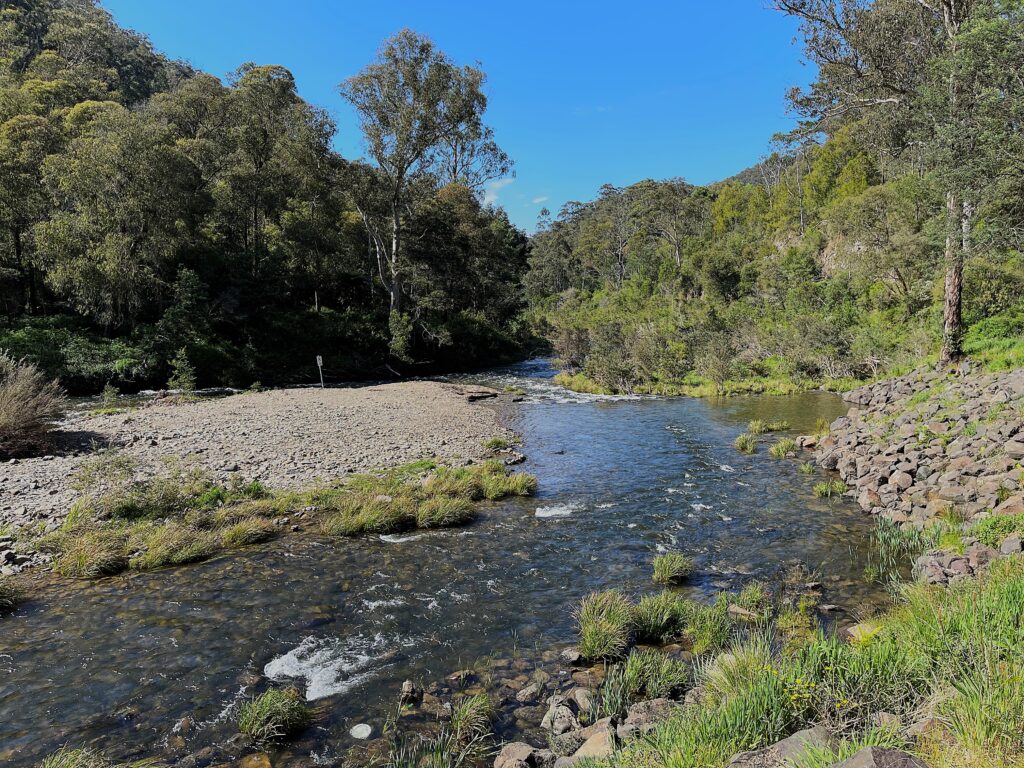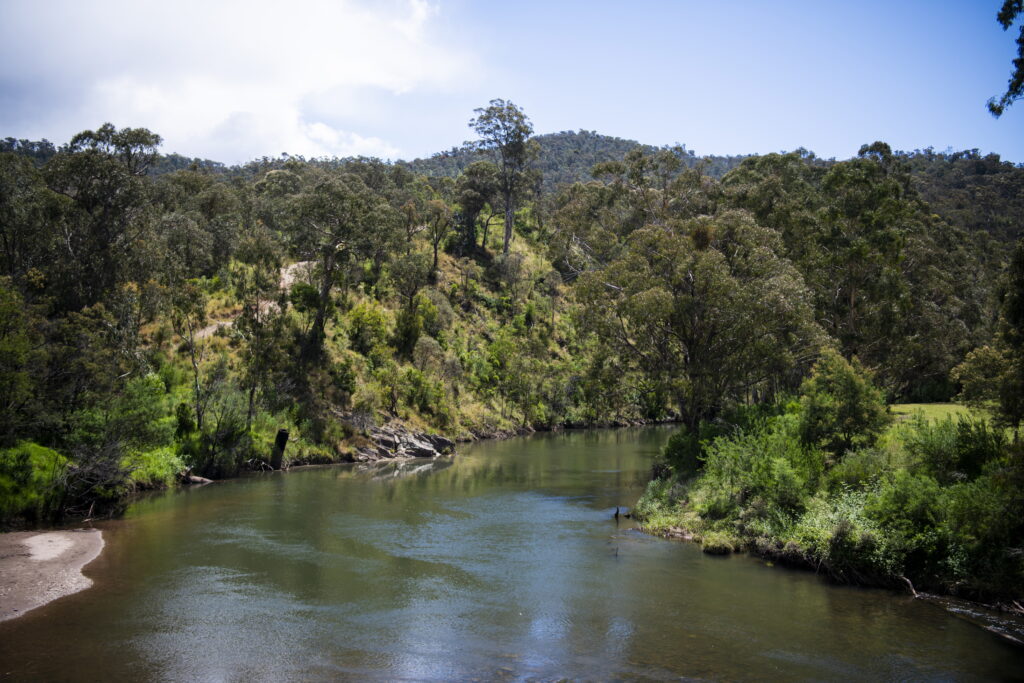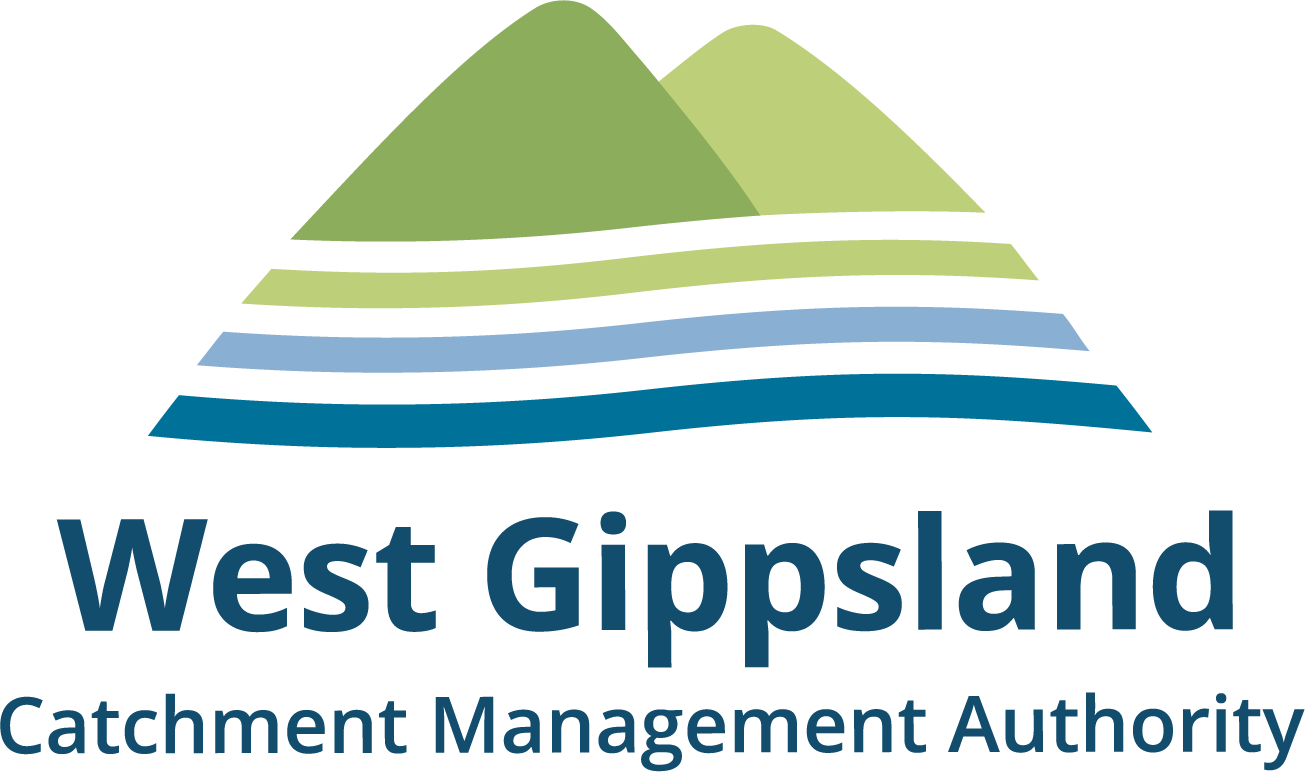Getting down to earth about carbon farming in South Gippsland
Carbon farming is talked about a lot right now, but what exactly is it?
That’s what 35 South Gippsland farmers came to find out at the ‘Down to Earth Farm Field’ day at Malabar Farm in Tarwin Lower recently. The day was one of a series of workshops on the topic organised by West Gippsland Catchment Management Authority (the CMA) in partnership with Agriculture Victoria and Landcare.
The group was shown first hand by fellow farmers how it is possible to farm in a way that is in tune with the environment, creates healthier soils, helps reduce emissions and is financially successful.
“Carbon farming is a hot topic at the moment,” said Sam Shannon, Sustainable Agriculture Facilitator at the CMA. “There’s a lot of great information out there but sometimes having a chat with other local farmers facing similar challenges and conditions is the best way to learn. That’s what these farm field days are all about.”
Hosts Jenny and Paul O’Sullivan opened their farm gates to local beef, sheep, horticulture and hobby farmers from the region, including beef farmer Rob who has been farming for fifty-one years and is ‘keen to become carbon neutral’. Agriculture student Harper was just beginning his farming career and ‘came to learn’ while Jill from Fish Creek wanted to hear about improving soil health.
“There’s a thirst for knowledge about carbon storage and we know farmers like to learn from each other. This event is a way for us to share our philosophy of farming in tune with nature and talk about our experience of being involved in a pilot program to measure on-farm emissions,” said Jenny.
The audience heard about Jenny and Paul’s 34-year farming journey and their efforts to improve grazing management procedures, create healthier soils and reduce greenhouse gases on their 664-hectare beef and sheep property.
“Preserving and improving nature has always been our goal,’ said Paul. “And we’ve proven that you can have a financially successful business while also doing the right thing by the environment.”
Alison Kelly, Agriculture Victoria’s farm emissions specialist, then stepped through the process of calculating a farm’s greenhouse gas emissions using tools such as the Greenhouse Accounting Framework (GAF) calculator.
Alison Kelly, Agriculture Victoria’s farm emissions specialist, then stepped through the process of calculating a farm’s greenhouse gas emissions using tools such as the Greenhouse Accounting Framework (GAF) calculator.
Soil expert Peter Ronalds from Inspired Ag Solutions dug into the science of soil carbon explaining what it is, how it benefits productivity and the varying levels of carbon found in different soil types. He told the group that soil carbon tests help them to understand their carbon stocks and where to focus efforts to improve soil health.
“Every tonne of carbon stored in soil (or trees) can remove 3.67 tonnes of carbon dioxide from the atmosphere,” he said.
A farm tour brought the theory to life. The group visited conservation sites that Jenny and Paul have worked on over the years, including an area of remnant woodland where spectacular 300-year-old grass trees flourish thanks to fences that Jenny and Paul installed to keep cattle out.
“Understanding how to make the most of carbon farming depends on the type of farm, the business needs and the landscape it operates in. By showcasing local examples and providing practical advice, we can cut through the noise so farmers can get on with the job of sustainable farming.”
For beef farmer Don, the reason for coming to the event was simple: “I love my bushland and want to protect it”.
The next farm field days focus on agroforestry, including how farmers can benefit from the Victorian Government’s ‘Trees on Farms’ program. Workshops are happening on Tuesday 17 February 2026 in Darriman and again on 24 February in Torwood. More information on the next Trees on Farms event is available here.
The Victorian Carbon Farming Outreach Program is delivered with funding support from the Commonwealth of Australia through the Department of Climate Change, Energy, the Environment and Water under the National Carbon Farming Outreach Program. The Program is delivered through a partnership between Agriculture Victoria, 10 Catchment Management Authorities and Landcare Victoria and other bodies.
With a focus on rivers and their catchments, the CMA works every day to improve catchment health through a range of programs and projects spanning from working towards self determination for Traditional Owners, partnering with legends like Landcare, Trust for Nature and Greening Australia and building relationships with the amazing landholders and community who are willing to work for river and catchment health.
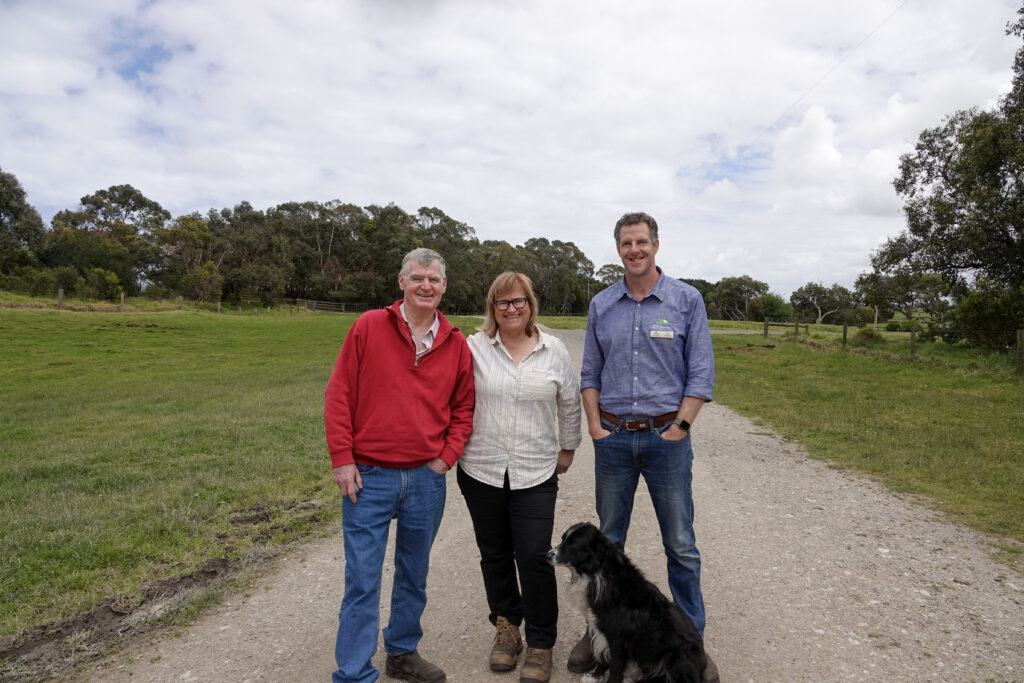

Seasons greetings – office hours
Our offices will be closed for the festive season from Tuesday 23 December 2025 and will reopen on Monday 5 January 2026.
We hope you enjoy getting out and about in the catchment for some relaxing days.
Wishing you all a very merry catchment Christmas and a safe, happy and healthy New Year.
Past year shows strong returns for West Gippsland catchment
From mountain headwaters to the Bass Strait coast and Gippsland Lakes, West Gippsland Catchment Management Authority (CMA) adds to the catchment’s balance sheet every day and their latest Annual Report details the work that has put West Gippsland’s waterways on the right side of the leger for another year.
Every tree planted, kilometre of river fenced, hectare of weeds removed, wetland protected and event held for the community in 2024-25 is captured in the CMA’s latest Annual Report approved in State Parliament recently.
“This report is more than numbers, it’s our story and showcase of the overall effort across the catchment and we are extremely proud of every achievement,” says Martin Fuller, CEO of West Gippsland CMA.
“We are privileged to be trusted to deliver environmental initiatives for the region funded by the Victorian and Australian governments. Importantly we acknowledge the guidance of Traditional Owners, and support of partners and community to bring all these moving parts together.”
The report paints a compelling picture of the diverse work of the small, local organisation. Projects focus on catchment health and include restoring rivers and wetlands, managing estuaries, delivering water allocations for the environment and partnering with landholders on sustainable agricultural solutions and building resilience to the effects of climate change.
In 2024-25, the CMA delivered on many projects – each playing their part in building a healthy catchment for West Gippsland.
- Revegetated 204 hectares to restore rivers and habitat for wildlife including fish, platypus, birds and wallabies.
- Delivered 42,216 megalitres of water for the environment into rivers to mimic natural flows for fish to migrate and breed.
- Covered 31,084 hectares of pest animal control to protect endangered species such as Hooded Plovers.
- Protected 106 hectares of precious remnant vegetation and treated 1,194 hectares of weeds to allow native plants to
re-establish and thrive. - Worked with 44 valued partners to amplify their efforts and because we can’t do it alone.
- Held events for 2,330 community members and partners to share knowledge and build skills.
- Provided 938 responses for farm plans, flood and other advice and planning permits.
“Many people are not sure of the breadth of work of the CMAs and this report demonstrated the broad range of benefits CMAs bring to the table for everyone,” Martin concluded.
About the river lovers at West Gippsland CMA
West Gippsland Catchment Management Authority (the CMA) is responsible for over 40,000 kilometres of designated waterways across the region. All these waterways flow to the Victorian coast, discharging through the Gippsland Lakes, or directly into Bass Strait and the Southern Ocean.
Become a river lover
Find out more about the work we do and sign up to our e-news for updates
This work ultimately flows on to a more healthy and resilient home for wildlife and the West Gippsland community.
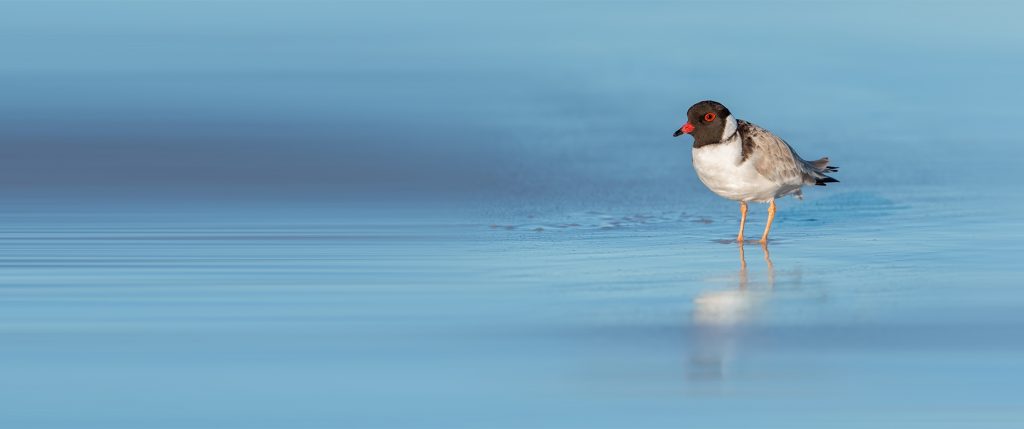
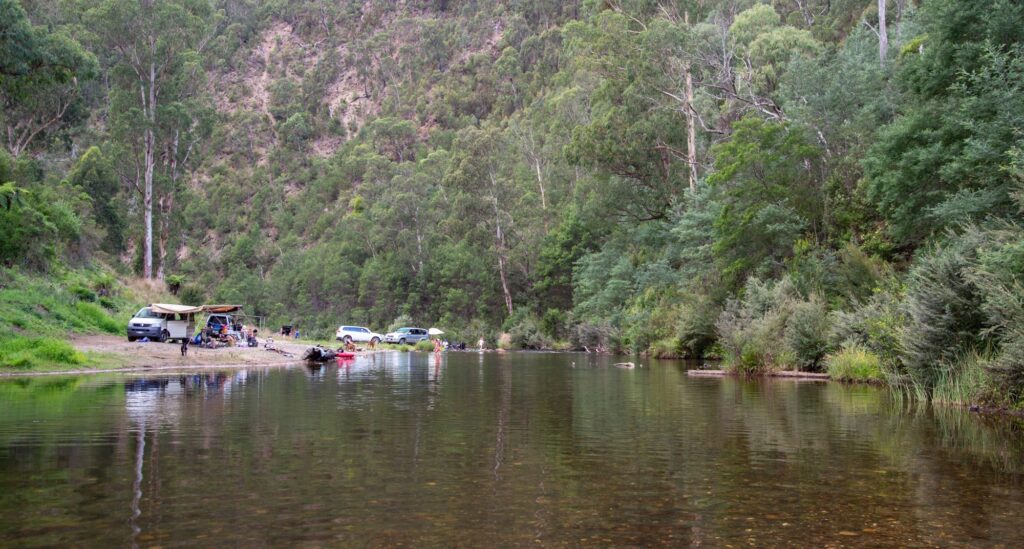
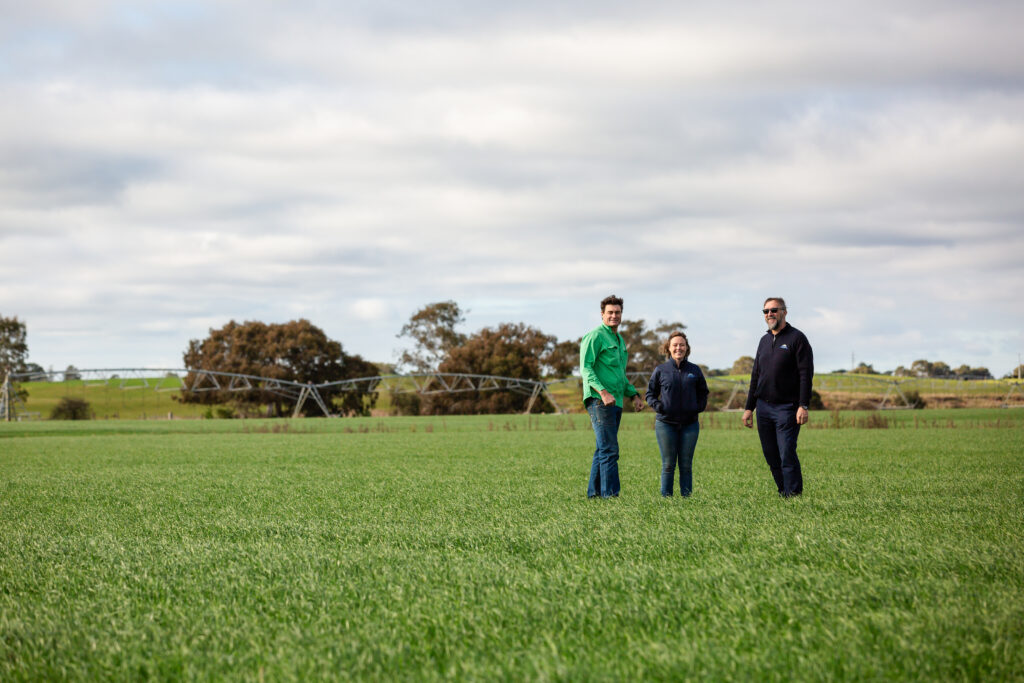

Shoring up Blue Rock Lake’s popular walking track starts this summer
Visitors to Blue Rock Lake will benefit from new erosion control works that will protect the foreshore track – ensuring continued access and supporting the lake’s health.
The Blue Rock Lake Foreshore Stabilisation and Community Path Renewal Project will start in February 2026, when water levels at the lake are typically lower, to rehabilitate around 130 metres of eroded shoreline.
Funding of $43,000 from Regional Development Victoria’s Tiny Towns Fund will see large rocks placed adjacent to the track, creating a ‘beach’ that will protect the foreshore and track from further damage caused by wave action and weather.
Latrobe Catchment Landcare Network Project Officer Caroline Hammond said the track must be temporarily closed to complete the works.
“We will need to close the track for between seven to ten days, depending on the weather and appreciate the community’s patience as we work to complete the job quickly,” she said.
“We will notify the community and install signage and project information on notice boards at the lake and in the local area to keep residents and lake users updated,” she said.
This project is being delivered in partnership by Latrobe Catchment Landcare Network (LCLN), Southern Rural Water, West Gippsland Catchment Management Authority (the CMA), and the Tanjil Valley Landcare Group.
Caroline said this project will help protect the environmental and recreational values of Blue Rock Lake well into the future.
Once erosion control works are complete, Tanjil Valley Landcare Group will host a community planting day to revegetate the site with native riparian, ephemeral, and aquatic species.
The West Gippsland Catchment Management Authority Rivers and Wetlands Officer, Matt Khoury said these plantings will strengthen the foreshore, slow water impact, and create valuable fish habitat.
“This project will protect and improve access to this much-loved community space, while later next year native aquatic plants will be restored to the foreshore as new habitat for fish and wildlife,” said Matt.
Kugerungmome/Powlett River – a river with heart
Take a trip to the picturesque Kugerungmome/Powlett River on Bunurong Country and you will see how the local community has been caring for the river and its catchment first-hand.
Kugerungmome/Powlett River enters Bass Strait at Kilcunda. It is a much-loved river alive with biodiversity, stories and cultural values. The vision for, and priority action to improve the health of the catchment have collaboratively been identified by Traditional Owners, community and partnership agencies.
A total of $1 million has been secured to support the delivery of some key projects. This second stage of the Kugerungmome project builds on the previous four-year program which established strong partnerships and collaborative delivery of on ground outcomes.
The current project will deliver environmental improvement outcomes on the ground and continue to build even stronger partnerships to work together in and advocate for the catchment and river to deliver on our shared vision.
On-ground projects will be delivered by the West Gippsland Catchment Management Authority (CMA), Bunurong Land Council Aboriginal Corporation, Bass Coast Landcare Network, Trust for Nature, Birdlife Australia and South Gippsland Water. They will bring landholders and community together and expand the reach and possibilities of works. They will also build a sense of stewardship to leave a lasting legacy in the catchment covering over 50,000 hectares.
Sub-projects include protecting cultural values, controlling predators to protect wildlife, protecting threatened birds such as the Hooded Plover, revegetating riverbanks and improving water quality across the Powlett catchment.
West Gippsland CMA sees everyone in the catchment as part of the river’s future with opportunities to act as stewards to play a small or large role in caring for it.
“When you bring everyone together it creates a groundswell of possibility and the large task of taking action becomes bite-size and manageable – supported by each other. That’s how integrated catchment management works,” explained Deb Archer, Manager Catchment and Communities at the West Gippsland CMA.
The Kugerungmome/Powlett Partnerships project is funded as part of the Victorian Government’s Our Catchments, Our Communities program aiming to improve the health of waterways and catchments across regional Victoria.
West Gippsland CMA is responsible for over 40,000 kilometres of designated waterways across the region. All these waterways flow to the Victorian coast, discharging through the Gippsland Lakes, or directly into Bass Strait and the Southern Ocean.
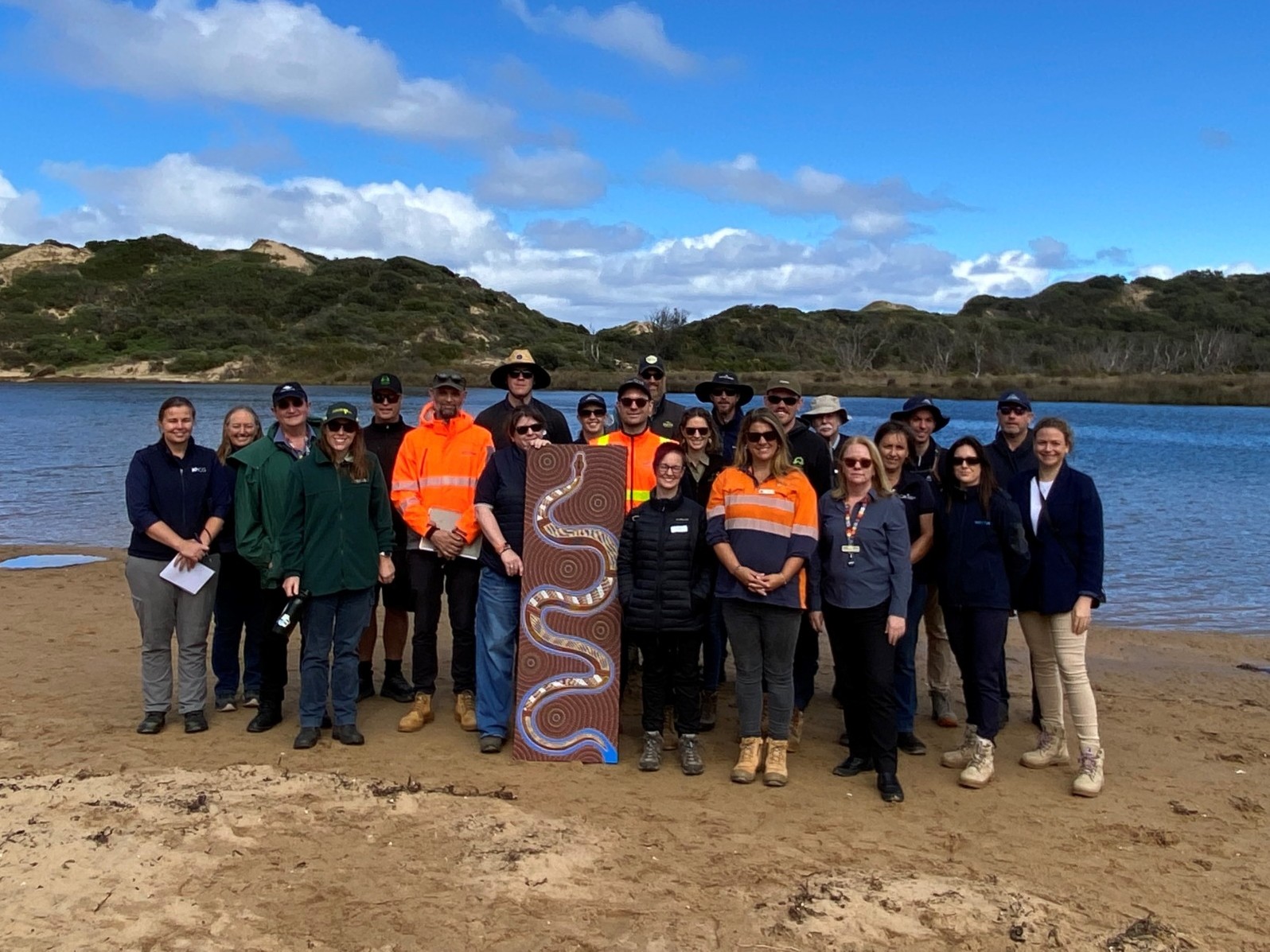
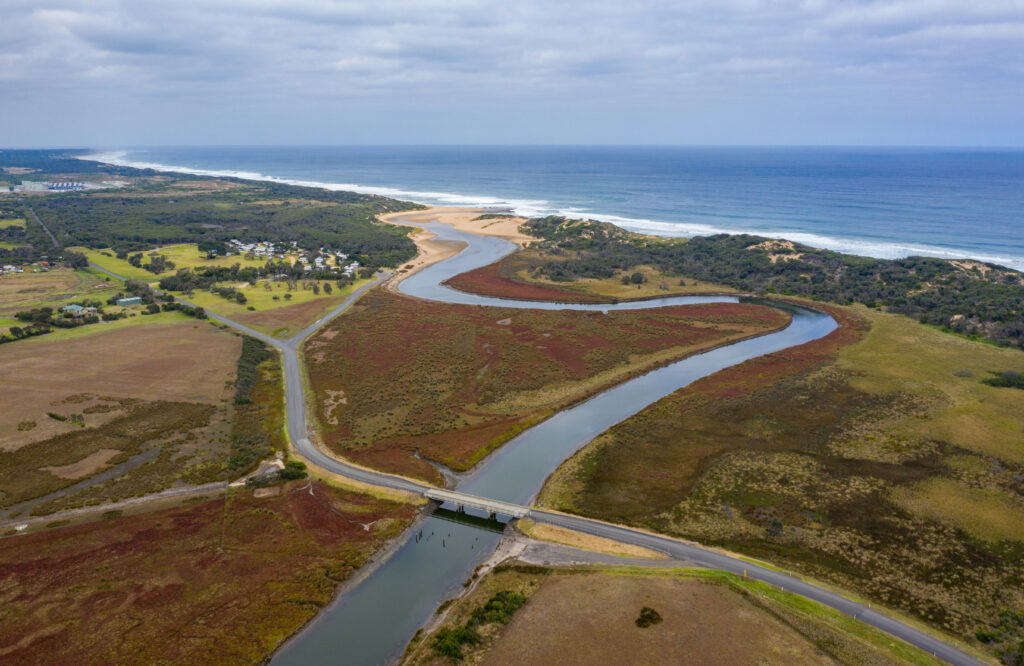
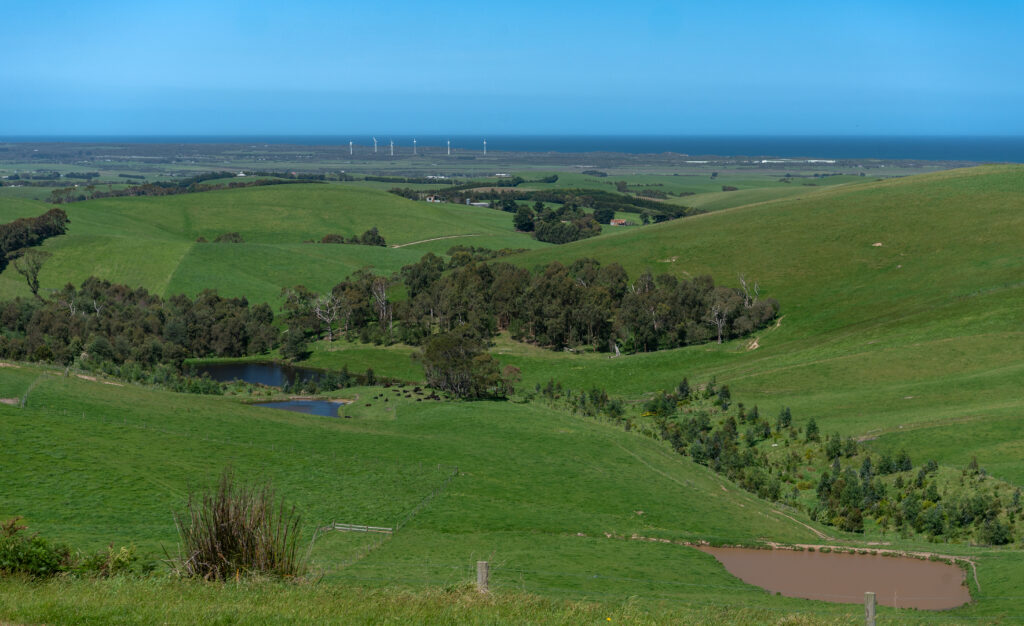
Sustainable Irrigation Project Officer
Are you looking for a place to grow your skills across diverse projects and beautiful landscapes? We’re looking for a passionate project officer to join the team at West Gippsland Catchment Management Authority. Read on to find out why WGCMA is the place for you!
- Part Time or Full Time Fixed Term Position until June 2028 with potential to extend.
- Enjoy a great work life balance with a hybrid working model based in Maffra or Traralgon.
About the Role:
As our Sustainable Irrigation Project Officer, you will support the management and delivery of projects throughout West Gippsland associated with promoting sustainable agriculture outcomes. The role has a focus on building and maintaining important partnerships with agencies, community, and public and private service providers.
What will your typical day look like?
- Support administration of the Sustainable Irrigation programs and relevant strategies.
- Preparing and implementing communications and engagement plans.
- Coordinate forums and workshops as required and represent the West Gippsland CMA on committees or groups as required.
- Manage project delivery, including contractors and service providers to ensure timelines, quality and budget are met for projects.
Let’s talk about you:
We are looking for someone who will have:
- Well-developed administrative and writing skills.
- Highly developed and demonstrated interpersonal skills suited to developing and maintaining partnerships with diverse stakeholders.
- Project management skills including budget development and management; contract and relationship management; administration of grants program; and monitoring, evaluation and reporting.
- Basic understanding of the West Gippsland landscape, its agricultural systems and natural resource management issues in the region.
Why West Gippsland Catchment Management Authority?
We focus our energy on interesting and meaningful work.
With a culture of continuous improvement, we are always striving to make a positive difference to our communities and create a healthier environment. We put our people at the heart of what we do and are dedicated to helping them grow their careers and reach their professional goals.
We value flexibility.
Work in a way that suits you best, flex time, job share arrangements or work from home. We know our people get their best work done when they’re in control of where and how they work, designing their work week around their team and personal commitments.
We support you to thrive.
To support your professional life, we offer a range of wellbeing initiatives, including regular events and programs, Employee Assistance Program, leave options, flexible working options, parental leave and return to work support packages.
Next Steps:
Sound like the sort of role for you? Apply now. We’d love to hear from you.
To apply please send your application to recruitment@wgcma.vic.gov.au by 9am Friday 2 January 2026.
So we can learn more about you, we encourage you to address the Key Section Criteria outlined in the Position Description under Item F.
If you have any questions or wish to have a confidential conversation about this role, please contact Anthony Goode, Sustainable Irrigation Program Coordinator on 0438 507 184 or anthonyg@wgcma.vic.gov.au.
At WGCMA, we share a commitment to value and embrace diversity in all forms; so that our work environment is a safe place we can all belong. All qualified applicants will receive consideration for employment regardless of their background, identity, orientation, ability of thinking style.
If you need assistance during the application process for accessibility reasons please contact Madelyn Brand, Lead Organisational Development and Human Resources on 0421 778 201 or madelynb@wgcma.vic.gov.au.
Learn about the science and benefits of Enhancing Farm Dams Field Day
Join us for a field day at Wilandra Farms in Clydebank to learn about the science and benefits of enhancing farm dams.
West Gippsland Catchment Management Authority is excited to bring experts from Australian National University’s Sustainable Farms initiative to our region.
Ecologists Amber Croft and Angelina Siegrist will share their research on the benefits of enhancing farm dams for water quality, water security and biodiversity.
The field day will include:
- Visiting a fenced dam on the property of Wilco Droppert and Sandra Jefford to hear about the enhancement work they have done
- The latest scientific research on the benefits of enhancing dams for biodiversity, water quality and water security
- Practical advice on ways to enhance farm dams.
This informative, practical field day is for farmers and landholders interested in making their dams resilient in a changing climate.
This is a free event, but registration is essential.
Date: Wednesday 26 November 2025
Time: 10.00am – 12.30pm
Location: Wilandra Farms, Punt Lane, Clydebank Vic 3851
Cost: Free (lunch provided)
If you have any questions about this event please contact Sam Shannon at sams@wgcma.vic.gov.au or 0409 944 114.
This event is part of our Climate Smart Farming program, supporting Gippsland farmers to adopt sustainable agriculture practices that benefit farming, the environment and the bottom line.
Partners:
Funders:
This event is supported by the Australian Government through funding from the Natural Heritage Trust under the Climate-Smart Agriculture Program.
Financial Accountant
- Up to Full Time (0.6 FTE up to 1.0 FTE) Permanent Position.
- Enjoy a great work life balance with a hybrid working model based in Traralgon.
About the Role:
As our Financial Accountant, you’ll support our Corporate Services Team to provide financial and business management support services to the organisation as well as ensuring that the WGCMA complies with relevant tax and corporate law. The role ensures WGCMA meets its financial monitoring and reporting responsibilities.
What will your typical day look like?
- Undertake finance and project reconciliations.
- Ensure Government funding is invoiced according to Service Level Agreements, and other ad-hoc revenue is invoiced and collected according to individual contract requirements.
- Comply with Australian Accounting Standards, the Financial Management Act and other applicable regulatory and statutory requirements.
- Provide financial reports in accordance with the predetermined schedule to the Executive Manager – Corporate Services on the financial position and performance of the Authority for presentation to the Board and Executive Managers.
- Provide support to the Lead – Finance and Compliance and the Executive Manager – Corporate Services as required.
Let’s talk about you:
We are looking for someone who will:
- Have extensive relevant experience in financial systems and processes including budget management, analysing financial data and report writing.
- Demonstrate the ability to improve and develop methods and techniques for financial reporting.
- Show an understanding and application of Australian Taxation Legislation (including GST and FBT).
- Display a high level of computer literacy with accounting packages and the Microsoft Office suite of programs, specifically Excel.
Why West Gippsland Catchment Management Authority?
We focus our energy on interesting and meaningful work.
With a culture of continuous improvement, we are always striving to make a positive difference to our communities and create a healthier environment. We put our people at the heart of what we do and are dedicated to helping them grow their careers and reach their professional goals.
We value flexibility.
Work in a way that suits you best, flex time, job share arrangements or work from home. We know our people get their best work done when they’re in control of where and how they work, designing their work week around their team and personal commitments.
We support you to thrive.
To support your professional life, we offer a range of wellbeing initiatives, including regular events and programs, Employee Assistance Program, leave options, flexible working options, parental leave and return to work support packages.
Next Steps:
Sound like the sort of role for you? Apply now, we’d love to hear from you.
To apply please send your application to recruitment@wgcma.vic.gov.au, by 5pm Monday 5 January 2026.
So, we can learn more about you, we encourage you to address the Key Selection Criteria outlined in the Position Description under Item “F”.
If you have any questions or wish to have a confidential conversation about this role, please contact Lucy Laurie-Rhodes, Executive Manager – Corporate Services on 0424 861 112 or lucyl@wgcma.vic.gov.au.
At WGCMA, we share a commitment to value and embrace diversity in all forms; so that our work environment is a safe space we can all belong. All qualified applicants will receive consideration for employment regardless of their background, identity, orientation, ability or thinking style.
If you need assistance during the application process for accessibility reasons please contact Madelyn Brand, Lead Organisational Development and Human Resources on 0421 778 201 or madelynb@wgcma.vic.gov.au.
Shelterbelts for livestock – Farm Field Day event
Join us for this farm field day to hear from experts how shelterbelts can increase farm production, improve biodiversity, reduce your carbon footprint and diversify income through agroforestry.
Hear firsthand practical tips from the farmers who have planted extensive shelterbelts across their cattle properties.
Learn about shelterbelt design, tree species selection and funding opportunities including the Victorian Trees on Farm program.
Date: Tuesday 2 December 2025
Time: 10.00am to 12.30pm
Location: Bushy Park
Cost: Free (lunch provided)
If you have any questions about this event, please contact Sam Shannon at sams@wgcma.vic.gov.au or call 0409 944 114.
Partners:
This event is one of a series of workshops offered under our Carbon Farming Outreach Program, which provides free training for farmers across the West Gippsland catchment to better understand their emissions and learn the benefits of carbon farming.
Funders:
The Victorian Carbon Farming Outreach Program is delivered with funding support from the Commonwealth of Australia through the Department of Climate Change, Energy, the Environment and Water under the National Carbon Farming Outreach Program. The Program is delivered through a partnership between Agriculture Victoria, 10 Catchment Management Authorities and Landcare Victoria and other bodies.
Water for the environment deliveries planned
Spring in West Gippsland is full of life and native fish are on the move, to make the most of this our Environmental Water team have been hard at work planning how we can best care for our rivers during this important time.
We currently have two water for the environment deliveries planned:
Carran Carran (Thomson River)
A top-up for the Heyfield Wetlands and a Spring fresh has been planned for Carran Carran (Thomson River), if conditions allow the river will receive its biggest flow over the Melbourne Cup long weekend, this fresh will trigger the upstream migration of native fish from Lake Wellington and the ocean.
Wirn wirndook Yeerung (Macalister River)
A spring fresh has been scheduled for Wirn wirndook Yeerung (Macalister River) and will commence on Tuesday 11 November, 2025.
While our main goal is caring for the environment, we also think about how people use the rivers. If we can time these flows to make your river activities better, we will – but protecting nature comes first.
A Spring fresh is a small increase in the size of a river flow over a short length of time and can occur in any season and usually lasts from a day to a week.
All of the details for these freshes, including the maximum flow rates and peak flow dates can be found here.
